Day 5 was the last day of the first workshop on Web 2.0 Learning opportunities in Mauritius. The training started at 09:00 and the facilitator went over the programme for the day. On the Agenda, there was a session on Social Networking, whereby participants would be exposed to Linkedin and Facebook, and the other sessions were on Dgroups and IMARK.
Social Networking
When we hear about Social Networking in Mauritius, the first thing we think of is Facebook. But the facilitator explained that even YouTube and Twitter are social networking platforms. The concept of social networking was explained through a PowerPoint presentation and video.
Linkedin
The first example of social networking that was taken was Linkedin. Participants were shown how to create a profile, add connections, build their profile with their professional details, join group, and add applications. Example of an existing Linkedin profile was taken to explain what we can do on this social networking platform and what benefits we can have. The facilitator also explained to the participants how to customize the settings on their account (Profile, email, groups, account etc.)
 |
| Session on Linkedin |
Facebook
The next session was on Facebook, which is the most popular social networking site in Mauritius and only 2 participants did not have an account on Facebook. One of these participants volunteered to create a Facebook account and the other one was following the steps in creating his account. They were shown how to sign up on Facebook, add information, add friends and accept friend requests, like pages, join groups, upload photos and create events. One exercise given to the participants was to create an event and share the event with friends and other contacts. Example of on event can be seen HERE. In addition, the facilitator also showed the participants how to customize their privacy settings so that not all content on their profile is public (which is the case by default when a new account is created).
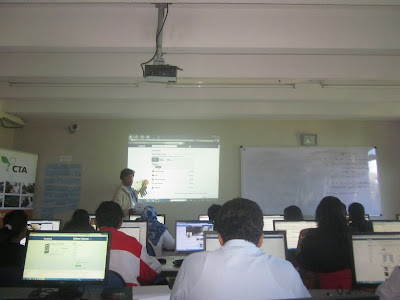 |
| Session on Facebook |
Dgroups
One of the objectives of the workshop is for different stakeholders in the Agricultural sector to collaborate for agricultural development and one platform that they can use for communication and sharing of information is the Mauritius Agricultural Information Specialists Network (MAISNET) Dgroup. Participants were asked to subscribe to the MAISNET and Web2forDev DGroups and were assisted by the facilitators during this process.
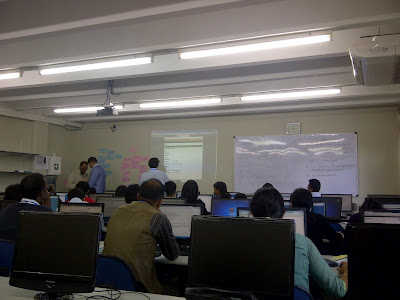 |
| Session on Dgroup |
Before proceeding to the next session, the participants wrote their comments on meta cards for Facebook and Linkedin.
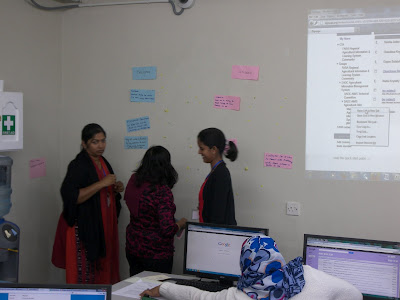 |
| Meta cards on Linkedin and Facebook |
Also, an energiser was proposed to the participants (who looked quite tired). It was a short and funny one, which the participants enjoyed.
 |
| Participants during the energiser activity |
IMARK
All participants had in their training pack a CD on IMARK (Information Management Resource Kit), which is an e-learning programme in agricultural information management, developed by FAO and contributing partner organization. A Power-Point presentation was delivered to the participants on IMARK, highlighting the 11 lessons in the CD. Participants were asked to write a blog post on each of the lessons after they have completed them.
You can learn different modules by IMARK online or order a CD-ROM HERE.
Evaluation Form
When all the topics to be covered for the Web 2.0 Learning opportunity were completed, participants were asked to fill in an online evaluation form developed by CTA, to evaluate the training being delivered to them from 9-13 July 2012.
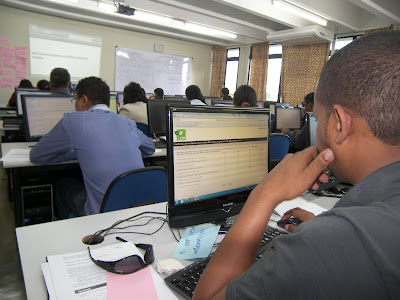 |
| Participant filling in the evaluation form of the web2.0 learning opportunity |
Closing Remarks
After filling the evaluation form, the facilitators proceeded with the closing remarks of the workshop. Mr. K. Boodhoo thanked CTA, UoM, and FARC for this opportunity, the participants for their active participation from Day 1, his co-trainer Mr. C.S.Sembhoo who has been a great support for this training and Miss N.Hosenally for technical assistance and sharing practical examples of how web 2.0 tools can be used. He highlighted the importance of using this tool for agricultural development by each of the participants, who now had a better insight on how to apply these tools.
Mr. Sembhoo thanked more or less the same institutions and people, and stressed on the fact that he will consider his role as trainer to be fruitless if the participants do not build up from here and contribute to the community, institutions etc. for Agricultural Development. According to him, the impact of the training would be the indication of success.
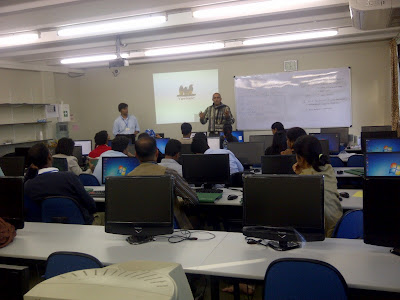 |
| Facilitators during closing remarks |
Two participants (one lady and one gentleman) volunteered to share their experience as participants of the 5-day workshop; how it has been beneficial and how they would use these tools in their work for agricultural development. They thanked CTA, UoM, FARC and the trainers and according to them it was a "high-level, intensive and professional training" and they are truly grateful that they have been selected.
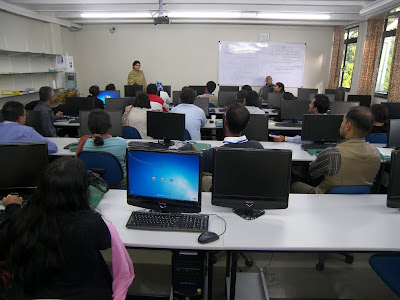 |
| Participant sharing her experience at the workshop |
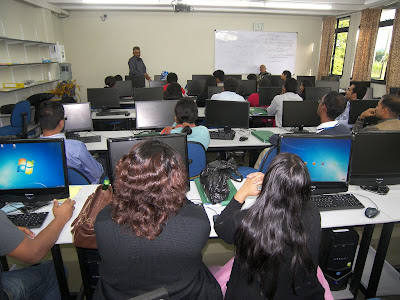 |
| Participant sharing his experience at the workshop |
With this, it was the end of the 1st Workshop on Web 2.0 Learning Opportunity in Mauritius and participants have been invited to a Ceremony (whereby the Certificate of Attendance would be given to them) on 27th July 2012 at 14:00 in the R.Burrenchobay Lecture Theatre, Faculty of Agriculture, University of Mauritius.
Please find in the slideshow below pictures of Day 5:





















